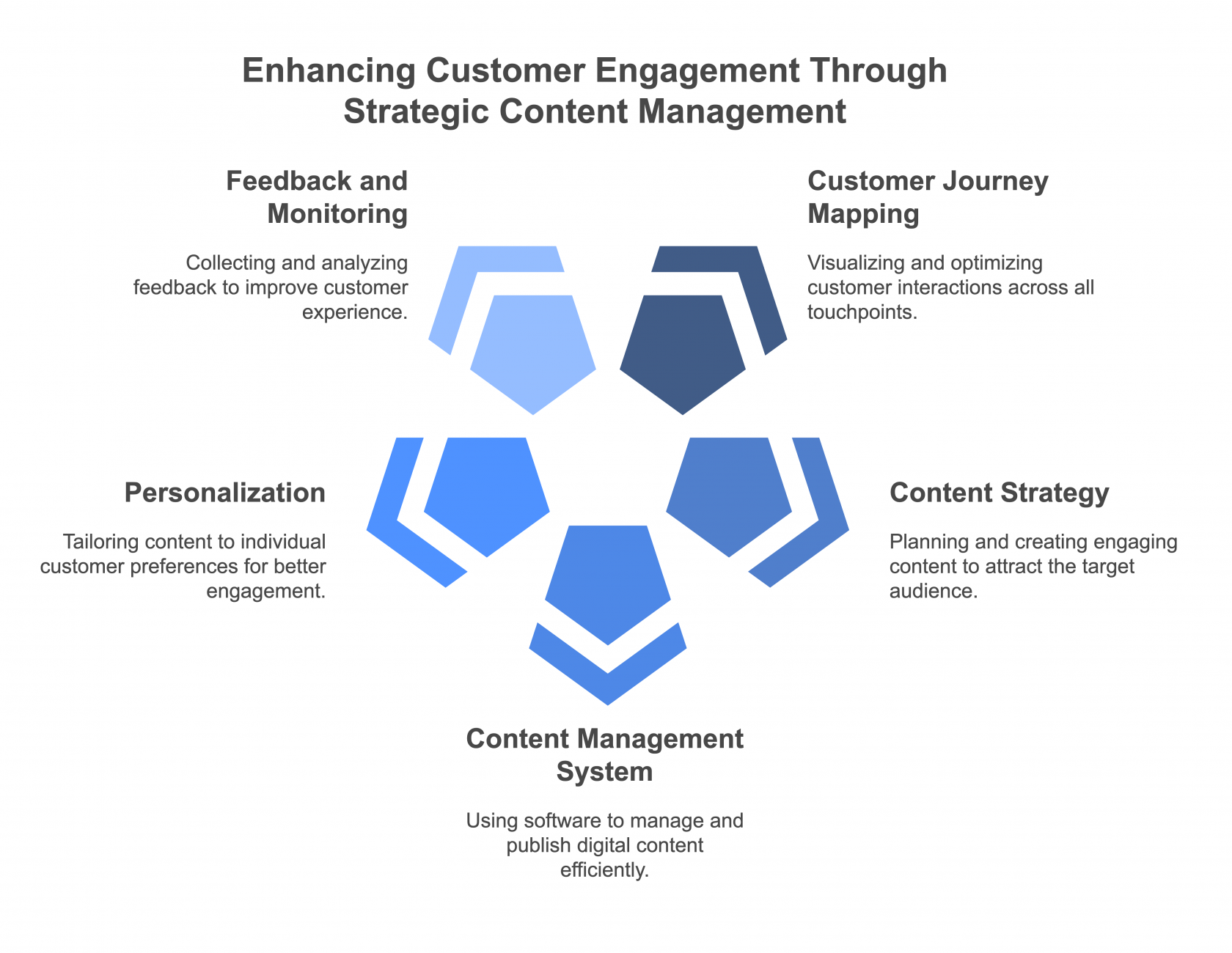Performance management for digital channels Customer experience and content management process
Performance Management for Digital Channels
Performance management for digital channels involves continuously monitoring, analyzing, and optimizing digital marketing activities to achieve business goals. It's a data-driven approach to ensure that digital channels are effective in driving results.
Key Components:
-
1. Defining Key Performance Indicators (KPIs):
- Definition: Establishing measurable values that demonstrate how effectively a company is achieving key business objectives.
-
Points:
- Examples: Website traffic, conversion rates, customer acquisition cost (CAC), customer lifetime value (CLTV), social media engagement.
- KPIs should be aligned with business goals.
- KPIs should be specific, measurable, achievable, relevant, and time-bound (SMART).
-
2. Data Collection and Analysis:
- Definition: Gathering and interpreting data from various digital channels to understand performance.
-
Points:
- Use analytics tools (Google Analytics, social media analytics, CRM data).
- Analyze data to identify trends, patterns, and insights.
- Segment data to understand performance variations across different audience groups.
-
3. Reporting and Dashboards:
- Definition: Creating visual representations of data to track and communicate performance.
-
Points:
- Use dashboards to provide real-time visibility into KPIs.
- Generate regular reports to summarize performance and identify areas for improvement.
- Share reports with stakeholders.
-
4. Optimization and Experimentation:
- Definition: Implementing changes and testing different strategies to improve performance.
-
Points:
- A/B testing of website elements, ad copy, email subject lines, etc.
- Continuously experiment and iterate based on data-driven insights.
- Optimize content, user experience, and marketing campaigns.
-
5. Continuous Improvement:
- Definition: Adopting a mindset of ongoing refinement and adaptation.
-
Points:
- Stay updated with industry trends and best practices.
- Regularly review and update digital marketing strategies.
- Foster a data-driven culture.
Customer Experience (CX) and Content Management Process
Customer experience (CX) and content management are crucial for building strong customer relationships and driving engagement.
 Key Components:
Key Components:
-
1. Customer Journey Mapping:
- Definition: Visualizing the customer's interactions with a brand across all touchpoints.
-
Points:
- Identify key touchpoints and moments of truth.
- Understand customer needs and pain points at each stage.
- Optimize the customer journey for a seamless and positive experience.
-
2. Content Strategy:
- Definition: Planning, creating, and managing content to attract and engage the target audience.
-
Points:
- Develop a content calendar and editorial guidelines.
- Create high-quality, relevant, and engaging content.
- Use a variety of content formats (blog posts, videos, infographics, etc.).
-
3. Content Management System (CMS):
- Definition: Using a software application to create, manage, and publish digital content.
-
Points:
- Simplify content creation and publishing.
- Ensure content consistency and accuracy.
- Enable collaboration and workflow management.
-
4. Personalization:
- Definition: Tailoring content and experiences to individual customer preferences.
-
Points:
- Use data to personalize website content, email messages, and offers.
- Deliver relevant and timely messages.
- Enhance customer engagement and loyalty.
-
5. Feedback and Monitoring:
- Definition: Gathering and analyzing customer feedback to improve CX and content.
-
Points:
- Use surveys, reviews, and social listening to collect feedback.
- Monitor online conversations and brand mentions.
- Address customer concerns and issues promptly.
-
6. Accessibility:
- Definition: Making sure that digital content and experiences are available to all users.
-
Points:
- Ensure that websites and apps are compliant with accessibility standards (WCAG).
- Provide alternative text for images and videos.
- Make content easy to understand and navigate.

No Comments